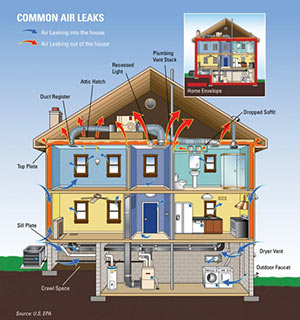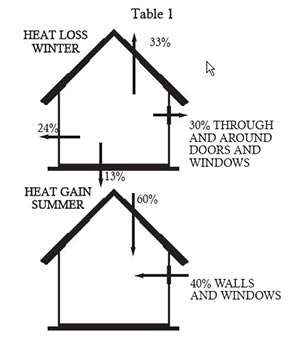Energy Tips
From Lewis Insulation in St. Michael, MN
Heating and cooling your home accounts for 50 – 70% of your home energy use. Unless your home was constructed with special attention to energy efficiency, adding insulation will probably reduce your utility bills. Much of the existing housing stock in the U.S. is not insulated to the optimal level. Older homes are likely to use more energy than newer homes, usually due to inadequate insulation and air leakage. Insulation saves money. It also makes your home more comfortable by helping to maintain a uniform temperature through the house.
Insulation Priorities
It is important to always:
- Insulate your attic to recommended levels, including the attic door or hatch cover.
- Provide the recommended level of insulation under the floor, above unheated spaces, around walls in a heated basement or unventilated crawl space, and on the edges of slabs-on-grade.
- Use the recommended levels of insulation for exterior walls for new home construction. When remodeling or residing your house, consider using the levels recommended for new construction in your existing walls.
How Insulation Works
Heat flows naturally from a warmer to a cooler space. In the winter, this heat flow moves directly from all heated living spaces to adjacent unheated attics, garages, and basements, or to the outdoors through ceilings, walls, and floors – wherever there is a difference in temperature. During the cooling season, heat flows from outdoors into the house. See Table 1 to the right.
Insulation decreases this heat flow by providing effective resistance to the flow of heat. Insulation is rated in terms of thermal resistance called R-values that indicate the resistance to heat flow. The higher the R-value, the greater the degree of insulating effectiveness. The R-value of thermal insulation depends on the type of material, its thickness, and its density. In calculating the R-value of a multi-layered installation, the R-values of the individual layers are added. Installing more insulation in your home increases R-value and the resistance to heat flow.
The effectiveness of an insulated wall or ceiling also depends on how and where the insulation is installed. For example, insulation that is compressed will not give its fullest rated R-value. Also, the overall R-value of a wall or ceiling will be somewhat different from the R-value of the insulation itself because some heat flows around the insulation through the studs and joints. Therefore, the overall R-value of a wall with insulation between wood studs is less than the R-value of the insulation itself because the wood provides thermal short-circuits around the insulation.
Equally as important as adding additional insulation in your home is proper air flow in the attic through air chutes, roof vents, and soffit vents. Proper bypass sealing of all penetrations lights, pipes, wires, fans, drop soffit, top plates, recessed lights, speakers, etc. is also essential for insulation to be effective.
For more information about insulation and how it can help save energy, call Lewis Insulation at 763-477-2612 or contact us for a Free Estimate.



